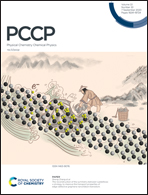Tuning the properties of hydrogels made from poly(acrylic acid) and calcium salts†
Abstract
Hydrogels consisting of poly(acrylic acid) (PAA) and calcium ions are a promising class of materials with shapeable, stretchable and self-healing behaviour originating from the reversible and dynamic nature of the electrostatic and hydrogen bonds in the structure. In the dry state, such materials – referred to as “mineral plastics” – can be transparent, hard and flame-resistant, while addition of water will result in rehydration and complete recoverage of the initial gel-like state. These desirable characteristics strongly depend on the molar mass of the used type of PAA and the experimental conditions at which the hydrogels are prepared. In this work, we show how the macroscopic properties of the materials can be adjusted by controlling the initial concentration of dissolved PAA and/or its molecular weight, and how rheological measurements can be used to monitor the resulting physical properties. Furthermore, we have employed isothermal titration calorimetry (ITC) to investigate thermodynamic aspects of the hydrogel formation to gain a better understanding of the underlying mechanism(s). Our results reveal that, and explain why, PAA molar masses between 50 and 100 kDa are particulary suitable for the formation of hydrogels with optimized properties, thus establishing a rational basis for targeted design of such materials with tailor-made characteristics.



 Please wait while we load your content...
Please wait while we load your content...